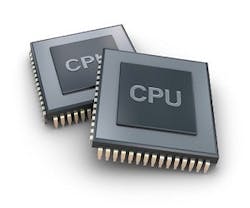Processing Chip Potential
Harvard Graduate student Wonyoung Kim has developed and demonstrated a new device with the potential to reduce the power usage of modern processing chips. This technology could allow for more efficient, energy-friendly data centers.
Kim has come up with an on-chip, multi-core voltage regulator (MCVR) that essentially addresses a mismatch of supply and demand.
"If you're listening to music on your MP3 player, you don't need to send power to the image and graphics processors at the same time," Kim says. "If you're just looking at photos, you don't need to power the audio processor or the HD video processor."
This MCVR technology can be likened to “shutting off the lights when you leave the room”, and could allow data centers to take advantage of lower energy bills while providing the same performance.
The on-chip design means that the power supply can be managed not just for each processor chip, but for each individual core on the chip.
The short distance that signals then have to travel between the voltage regulator and the cores allows power scaling to happen quickly—in a matter of nanoseconds rather than microseconds—further improving efficiency.
"This is a plug-and-play device in the sense that it can be easily incorporated into the design of processor chips," says Kim. "Including the MCVR on a chip would add about 10 percent to the manufacturing cost, but with the potential for 20 percent or more in power savings."
